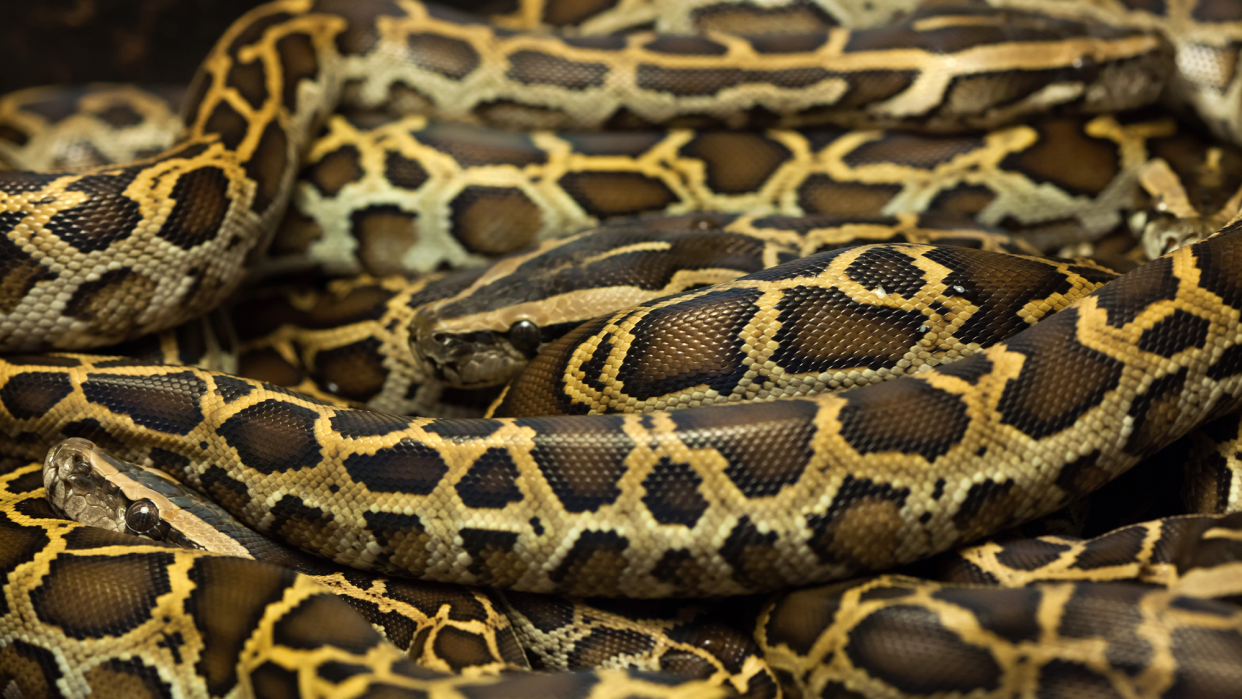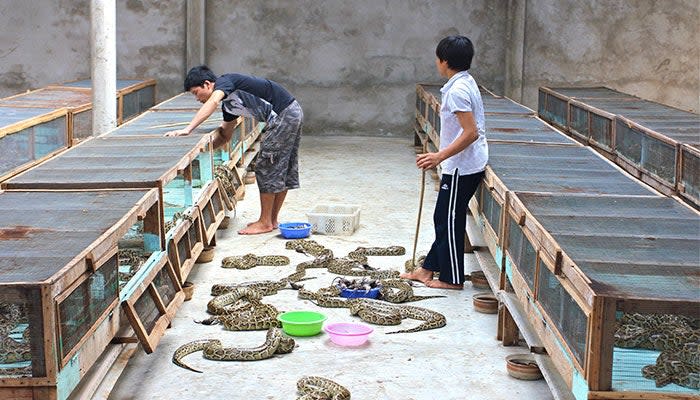Scientists propose eating more python

The world needs a better source of sustainable meat. Many conventional livestock raising systems are considered unsustainable and generally make the environment worse, so scientists are searching for new ways to feed and satisfy a growing human population. One source could come from one of the most feared animals on Earth. Farmed pythons could offer a low-emission source of protein, according to a study published March 14 in the journal Scientific Reports.
Pythons are not venomous, but they do reach lengths of 20 feet. That girth comes with a lot of white meat that is high in protein and they are considered a delicacy in some Southeast Asian countries. Venomous snakes have historically been farmed for their venom, but the practice of keeping large quantities of snakes for meat has begun to grow. The farmed snakes are typically set up in large barns surrounded by “sun traps” that help snakes bask in the sun.

These snake farms could offer a solution, particularly in regions where python farming has already begun to expand in recent decades. While the farming still faces some issues scaling up, it is something to consider according to the team from this new study.
“Climate change, disease and diminishing natural resources are all ramping up pressure on conventional livestock and plant crops, with dire effects on many people in low-income countries already suffering acute protein deficiency,” Daniel Natusch, a study co-author and herpetologist at Macquarie University in Australia, said in a statement.
[Related: Scientists swear their lab-grown ‘beef rice’ tastes ‘pleasant.’ ]
In this study, a team of scientists from Vietnam, Australia, England, and South Africa, looked at more than 4,600 pythons on two commercial python farms in Thailand and Vietnam. They compared two species–the reticulated python (Malayopython reticulatus) and Burmese python (Python bivittatus) and tested the effects of different food regimes.
They were fed a mixture of locally sourced food, including pork byproducts, fish pellets, and rodents. Baby pythons were also ‘sausages’ made of waste protein from meat and fish offcuts. These sausages led to faster growth, without any apparent impacts on health.
“It’s a bit like hiding broccoli in the meatballs to get your kids to eat their veggies,” Natusch said.
“We showed that snake farms can effectively convert a lot of agricultural waste into protein, while producing relatively little waste of their own.”
They gained upwards of 1.6 ounces per day and the female snakes grew quicker than the males. According to the team, they were never force-fed and they also found that the snakes could fast without losing body mass. This means that it required less human labor for feeding than traditional livestock farming.
Since they grew so quickly on smaller amounts of food, they had a good feed conversion ratio. In farming, feed conversion is the amount of animal feed that is needed to produce one pound of meat.
"In terms of food and protein conversion ratios, pythons outperform all mainstream agricultural species studied to date," said Natusch. "We found pythons grew rapidly to reach ‘slaughter weight’ within their first year after hatching. While large-scale python farming is well established in Asia, it has received little attention from mainstream agricultural scientists.”
Pound for pound, reptiles like snakes also generate fewer greenhouse gasses than mammals do. They have sturdy digestive systems capable of breaking down bones and produce almost no water waste and poop less than mammals.
“Snakes require minimal water and can even live off the dew that settles on their scales in the morning,” said Natusch. “They need very little food and will eat rodents and other pests attacking food crops.”
[Related: Snakes can actually hear really well.]
While there is also some concern from conservationists about commercial snake farming learning to the illegal harvesting of endangered and wild snake populations, Natusch has argued that the opposite is true. It may give local communities a financial incentive.
“We also found some farms outsource baby pythons to local villagers, often retired people who make extra income by feeding them on local rodents and scraps, then selling them back to the farm in a year,” said Natusch.
Burmese pythons are considered an invasive species in Florida’s Everglades, where they are hunted to cull the population. A 2023 study from the US Geological Survey said Florida’s python problem is one of the world’s most challenging invasive species management issues. Their meat reportedly tastes like chicken, the team acknowledges that encouraging more people to eat snakes in other parts of the world will take some time.
“I think it will be a long time before you see Python burgers served up at your favorite local restaurant here [in Australia],” said Natusch.

